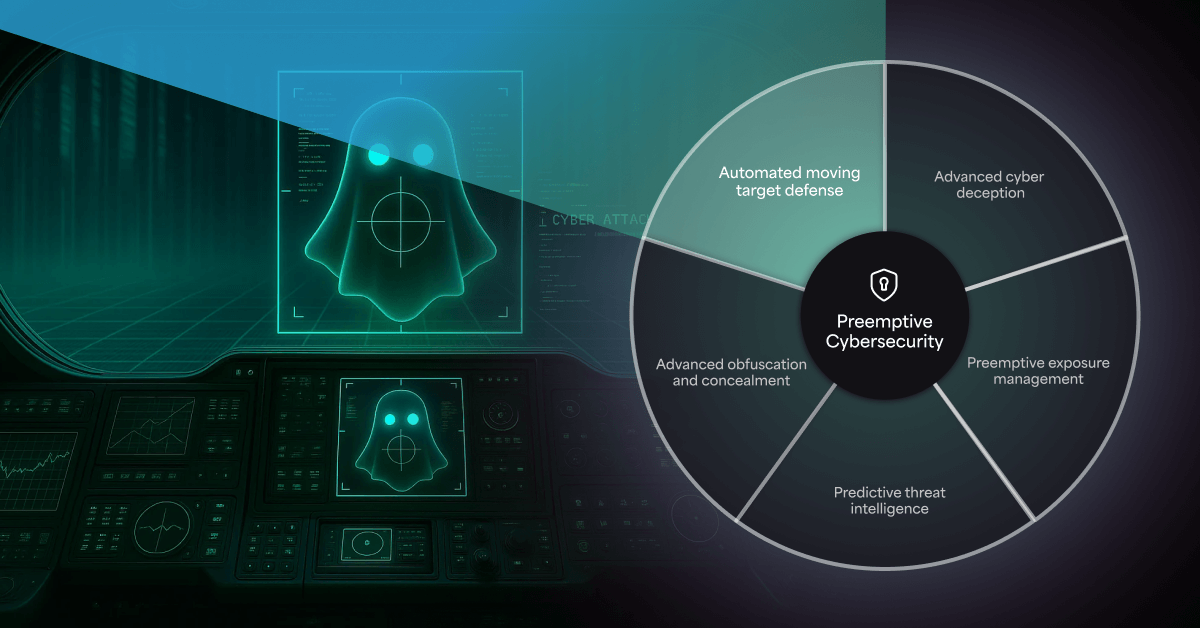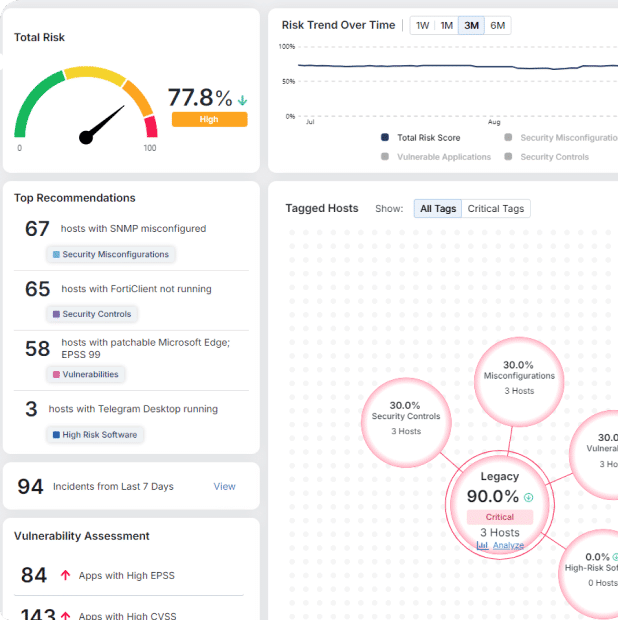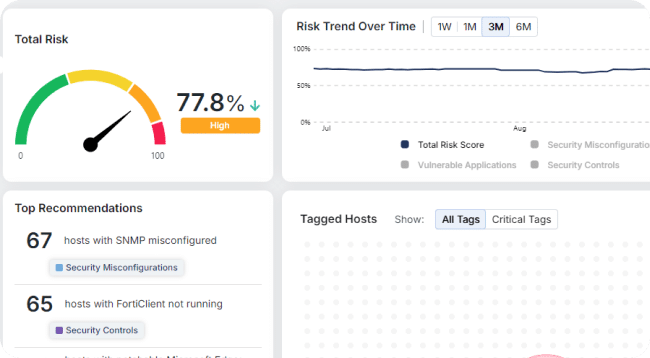What is Preemptive Cyber Defense?

Cyber threats are evolving at an unprecedented pace, bypassing traditional security measures and causing significant financial and operational damage. Organizations can no longer rely solely on reactive cybersecurity solutions that detect and respond to threats only after they have infiltrated networks. Instead, a paradigm shift towards preemptive cyber defense is gaining traction, offering a proactive, prevention-first approach that stops attacks before they can cause harm.
Preemptive cyber defense is a security strategy that proactively neutralizes threats before execution, rather than relying on detection and response. Unlike traditional cybersecurity solutions like Endpoint Detection and Response (EDR) or Extended Detection and Response (XDR), which act after an attack is underway, preemptive defense technologies prevent cyber threats at their inception.
How Does Preemptive Cyber Defense Work?
Preemptive cyber defense leverages innovative technologies to fortify an organization’s defenses against sophisticated and evasive attack techniques.

A leading example of preemptive cyber defense technologies is Morphisec’s pioneering Automated Moving Target Defense (AMTD) technology and Adaptive Exposure Management (AEM). These capabilities introduce unpredictability into an attacker’s environment, preventing them from executing exploits or identifying vulnerabilities.
AMTD —Dynamically reshapes the runtime memory of endpoints, making them unpredictable and unexploitable. This blocks memory-based attacks such as ransomware, zero-day vulnerabilities, and fileless malware before they execute.
AEM — Continuously identifies, prioritizes, and mitigates vulnerabilities and misconfigurations in third-party applications and endpoint settings, reducing an organization’s overall attack surface.
Offered as part of Morphisec’s Anti-Ransomware Assurance Suite, these capabilities combine to provide multi-layered protection for all endpoints with the ability to prevent 100% of attacks at the endpoint.
While preemptive cyber defense is nascent, Gartner suggests that the adoption of preemptive cyber defense capabilities will surpass the pace of response-based technologies like EDR.
According to Gartner: “By 2030, preemptive cybersecurity technologies will be included in 75% of security solutions that are currently focused on solely on detection and response.”1
Why Preemptive Cyber Defense is a Game Changer
Traditional detection-based tools depend on indicators of compromise (IoCs) or behavioral analytics, which means they react after an attack has already started. Preemptive cyber defense eliminates the attack vector entirely, preventing threats like ransomware, zero-day exploits, and memory-based or fileless malware.
Security teams today face overwhelming workloads due to false positives, complex alerts, and expanding attack surfaces. Preemptive cyber defense significantly reduces alert fatigue and response overhead by stopping threats before they require investigation or remediation. By eliminating attacks before they occur, organizations can streamline security operations and free up resources for more strategic initiatives.
Unlike EDR/XDR solutions that require constant scanning, signature updates, and cloud connectivity, Morphisec’s preemptive cyber defense platform operates without introducing resource-heavy processes. This results in lower system impact, minimal management overhead, and reduced security operation costs. Organizations can achieve robust protection without the complexity or maintenance burden associated with traditional security tools.
Preemptive cyber defense also enhances existing security stacks rather than replacing them. It serves as a critical “safety net” for solutions like Endpoint Detection & Response (EDR), Extended Detection & Response (XDR), and Security Information and Event Management (SIEM). By blocking threats that bypass traditional security controls, this approach strengthens an organization’s overall security posture and minimizes the risk of successful cyberattacks.
Building the Business Case for Preemptive Cyber Defense Technology Investments
Any shift in cybersecurity strategy requires investment in new technologies. Cybersecurity leaders operate in a reality where resources and budgets are always constrained. Beyond justifying the security benefits of new technologies, leaders also need to build a compelling business case that demonstrates a clear return on investment (ROI).
A critical tool in making this case is Annual Loss Expectancy (ALE), a standard actuarial method used in risk assessment exercises. Increasingly, ALE is being applied in cybersecurity investment decisions to quantify financial risks and justify technology investments, particularly in situations where stakeholders perceive potential technology overlap or redundancy.
ALE provides a quantitative metric to estimate the financial impact of a potential security investment over a given period. This approach assesses and prioritizes security risks by assigning a monetary value to the expected annual cost of specific security incidents. In practice, an enriched ALE calculation considers factors such as an organization’s risk tolerance, the potential cost of data breaches, and the likelihood of security incidents occurring under current security controls. Additional considerations include the increasing sophistication of cyber threats, rising attack complexity, and escalating remediation costs.
While simple in theory, ALE must be customized to reflect an organization’s unique risk landscape. It helps cybersecurity leaders quantify the potential financial loss associated with security incidents and contrast that with the projected cost savings and risk reduction provided by preemptive cyber defense technologies like Morphisec.
For organizations looking to make a compelling case for investment, an ALE-driven business justification can be a decisive factor in securing budget approval for cutting-edge security solutions. Download the “Cybersecurity Tech Investment Planning: Using Annual Loss Expectancy to Build a Business Case” white paper to understand ALE calculations and learn how to apply and map them for business stakeholders.
Driving Tangible Results with Preemptive Cyber Defense Solutions
Organizations across industries have seen tangible benefits from adopting preemptive cyber defense capabilities like AMTD. TruGreen, a $1.5 billion lawn care company, strengthened its cybersecurity by tenfold with Morphisec’s preemptive protection. A financial services firm successfully prevented $5.9 million in ransomware damages from a BlackCat/ALPHV attack, while a manufacturing company avoided $4.7 million in damages from a LockBit ransomware attack. Additionally, Houston Eye Associates achieved 40% cost savings through proactive threat prevention.
Cybersecurity breaches cost organizations millions in damages, lost productivity, and compliance penalties. By stopping threats before execution, preemptive cyber defense offers significant cost savings by reducing incident response costs, downtime and recovery expenses, as well as ransomware payouts and extortion risks. This proactive approach not only minimizes financial damage but also enhances operational resilience.
Morphisec is leading the preemptive cyber defense category with over 9 million protected endpoints, preventing more than 30,000 attacks daily. As cyber threats continue to evolve, the demand for proactive security solutions like preemptive cyber defense will only increase, solidifying its role as a fundamental cybersecurity strategy for businesses worldwide.
Why Morphisec Is a Leader in Preemptive Cyber Defense
Morphisec’s patented AMTD technology and prevention-first approach make it a best-in-class solution. It seamlessly integrates with existing security stacks, ensuring plug-and-play deployment without adding complexity. Unlike traditional security tools that rely on detection after an attack has occurred, Morphisec stops advanced threats before execution, effectively reducing the attack surface and mitigating potential damage.
Another key advantage is its lightweight, scalable, and cost-effective design. Morphisec operates without requiring signature updates, scanning, or complex configurations, making it an ideal solution for organizations looking to enhance security while maintaining system performance.
Additionally, it is built for both enterprise environments and Managed Security Service Providers (MSSPs), allowing lean IT teams and MSSPs to manage multiple environments efficiently with minimal operational burden.
The Future of Cybersecurity is Prevention
As cyber threats grow more sophisticated, organizations must move beyond reactive security measures. Preemptive cyber defense is the future of cybersecurity—offering unparalleled protection against ransomware, zero-days, and fileless malware while reducing complexity and costs.
Morphisec makes preemptive security practical, effective, and easy to implement. Whether protecting a global enterprise, SMB, or MSSP, a prevention-first approach ensures organizations remain resilient against today’s most advanced threats.
Don’t wait for an attack to happen—book a tailored demo today to see how Morphisec can help your organization adopt preemptive cyber defense capabilities.
1Gartner, Emerging Tech: Tech Innovators in Preemptive Cybersecurity, 2025, Luis Castillo, Isy Bangurah, 8 January 2025
GARTNER is a registered trademark and service mark and Hype Cycle is a registered trademark of Gartner, Inc. and/or its affiliates in the U.S. and internationally and is used herein with permission. All rights reserved.
Gartner does not endorse any vendor, product or service depicted in its research publications, and does not advise technology users to select only those vendors with the highest ratings or other designation. Gartner research publications consist of the opinions of Gartner’s research organization and should not be construed as statements of fact. Gartner disclaims all warranties, expressed or implied, with respect to this research, including any warranties of merchantability or fitness for a particular purpose.
Stay up-to-date
Get the latest resources, news, and threat research delivered to your inbox.





















